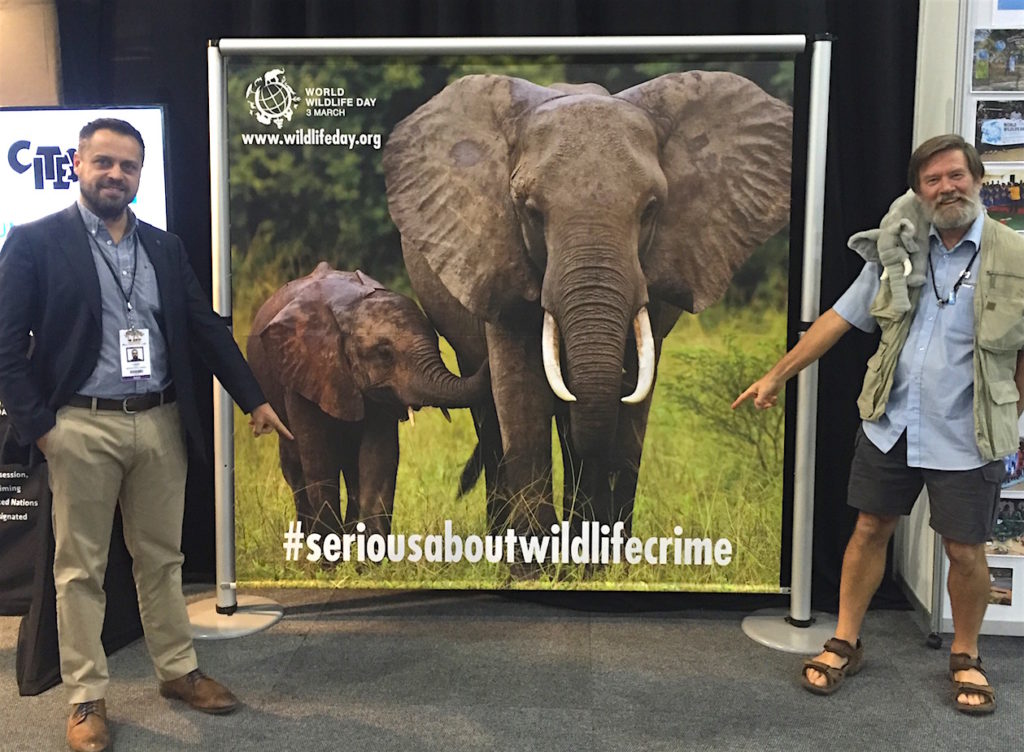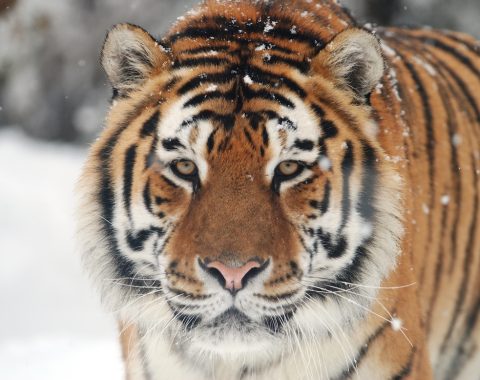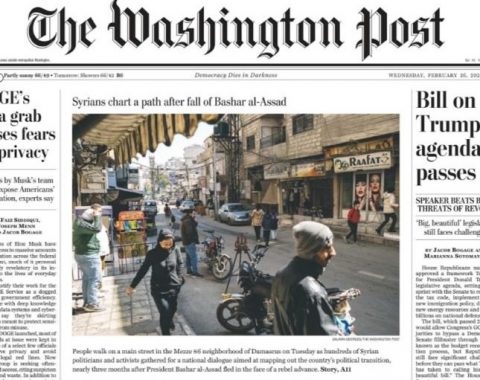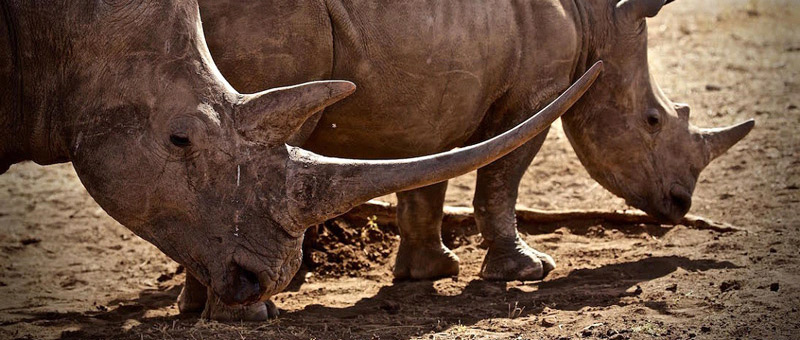The 17th meeting of the Conference of the Parties to CITES (CoP17) took place in Johannesburg, South Africa from 24 September to 5 October 2016.
Elephant Action League attended the Conference as an official observer, including co-founder Andrea Crosta.
CITES (the Convention on International Trade in Endangered Species of Wild Fauna and Flora) is an international agreement between governments that adhere voluntarily. It aims to regulate the global marketplace for wild animals and plants to ensure trade does not jeopardise their survival in the wild. Today it accords protection for over 35,000 species of animals and plants.
Species covered under CITES are categorized into three Appendices, according to the degree of protection they require.
Appendix 1: Species at risk of extinction – trade is allowed only under exceptional circumstances.
Appendix II: Species not necessarily threatened with extinction, but for which trade might affect their survival.
Appendix III: Species protected in at least one country, which has requested other Cites parties for help in controlling trade.
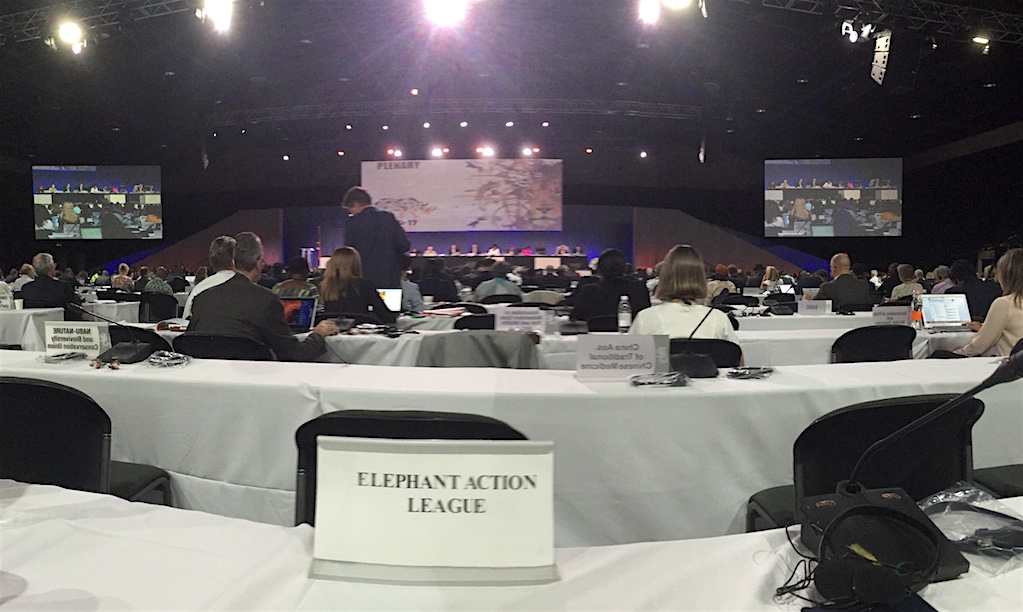
The most important decisions at this CoP17:
Elephants: Elephants have faced a number of protection and rejection at the CITES meeting in regulating ivory trade between countries. .
First victory, the Decision Making Mechanism (DMM) for future trade in ivory has been finally abandoned, after 9 years of discussion. Namibia, South Africa, and Botswana all recommended the CITES Parties to adopt a DMM, while outspoken opponents of a DMM included Kenya, Republic of Congo and Chad.
Oct 2: A resolution passed with CITES encouraging the member states to close down the national ivory markets.
Oct 3: The proposals to open up ivory markets by Namibia and Zimbabwe were soundly defeated.
Oct 3: Unfortunately the proposal n.16 to up lift all the elephants in Africa to Appendix I was rejected. The proposal was NOT supported by the U.S, EU, China, Canada, Russia, Vietnam, Japan, Tanzania, Oman and a number of other Southern African States. Botswana was one of the only countries who voted in favor of the proposal.
Oct 3: Proposals submitted by Namibia and Zimbabwe to allow international commercial trade in their elephant populations was voted against.
Rhinos: An attempt to legalize rhino horn was rejected, with a total ban on rhino horn upheld. This decision means that Swaziland is not permitted to sell their stockpile of white rhino horns. EAL celebrates this as a great victory, as we believe selling stockpiles will not curb illegal rhino poaching, but would just expand the market and availability of it.
Pangolins: All 8 species of pangolins, the most trafficked mammal in the world, were moved to Appendix 1 of CITES. This is a significant step in protecting pangolins, which are threatened with extinction and have been detrimentally affected by international trade. Under The IUCN Red List, all 8 species of pangolins have a status ranging from vulnerable to critically endangered, and all are facing a decreasing population trend.
Lions: The proposal to put lions in Appendix I with a zero trade quota for wild and captive lion bone was rejected. A compromise document decided that South Africa can continue with captive lion bone trade. This is a defeat for the lion, which are under The IUCN Red List; they are vulnerable with a decreasing population trend. While lion populations are on the decline, international trade in lion specimens is on the rise with demand for lion bones, body parts, and derivatives for traditional medicine. Zimbabwe argued strongly against the proposal, and the Secretariat recommended that the proposal be rejected. “The coexistence of people and lions can only be protected by putting a value on lions,” the Zimbabwe delegate said, “through eco-tourism and sport hunting, with the money ploughed back into conservation.”
Silky and Thresher Sharks: Proposals were approved to move Silky Sharks and three species of Thresher Sharks to CITES Appendix II. This victory will control the trade of these species, protecting them from overharvesting. Silky sharks are currently listed as near threatened and all three species of thresher sharks are listed as vulnerable, both with a decreasing population trend according to The IUCN Red List.
African Grey Parrots: African grey parrot has been given the highest level of protection by moving to Appendix I, this prohibits commercial international trade. This parrot was once throughout west and central Africa, the largest populations are found in central Africa. The pet trade has overharvested, which has reduced their populations in the wild. Within the last 25 years, more than 1.5 million wild African Grey Parrots have been taken from the wild for trade, making them one of the most traded parrots. The parrots are currently listed as vulnerable with a decreasing population trend, according to The IUCN Red List. The proposal, submitted by Angola, Chad, the European Union, Gabon, Guinea, Nigeria, Senegal, Togo, and the U.S., was adopted in a vote with 95 countries in support, 35 opposed, and five abstentions.
Cheetahs: The member governments of CITES agreed to new recommendations to help curb cheetah trafficking to Gulf states. The CITES Standing Committee approved the recommendations earlier this year and they were officially signed off from the committee at CoP17. The recommendations include working with social media and e-commerce to address illegal trade online, implementing new reporting requirements to assist conservationist in their research, and encouraging cooperation and communication among countries’ law enforcement agencies. The UAE, Kuwait, Kenya, EU, U.S., South Africa and Zimbabwe were all in favor of the recommendations. Under The IUCN Red List, Cheetahs are listed as vulnerable with a decreasing population trend. Cheetah pet trade is growing and is being driven by social media posts of wealthy owners posing in photos with their cheetahs.
Timber: Oct 2, the entire Dalbergia genus was voted into Appendix II, in addition to three species of Guibourtia from Central Africa and Pterocarpus erinaceus from West Africa.
Dalbergia are a large genus of small to medium-size trees, shrubs, and lianas in the pea family, Fabaceae. This plant is highly sought-after, mostly sold as “rosewood” or exported from China as Hongmu (redwood), which is used for furniture. The importance of placing all entire genus in Appendix II allows for more fluidity in districting it with other types of trees and reduces enforcement challenges.
The three Guibourtia species are used as an alternative to Hongmu. The illegal harvest and trade of these species has increased in recent years.
Pterocarpus erinaceus is used both locally and also as an alternative to Hongmu, as well. This rare species in only found above a certain diameter class, which is leading it into commercial extinction.
In addition, Madagascar was given until the end of the year to report on its efforts to close down the illegal timber trade.
Read more about the proposals and species here:
https://cites.org/eng/cop/17/prop/index.php
